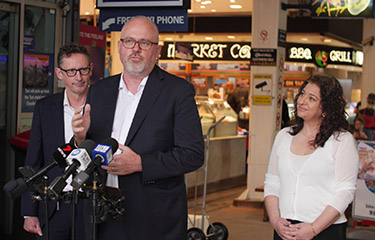Australia has mandated all its hospitality venues must display the country of origin of the seafood they serve.
State and federal consumer affairs ministers unanimously agreed to make the change at a meeting on Friday, 24 November, following stakeholder consultation and a cost-benefit analysis. The move had been backed by Australia Prime Minister Anthony Albanese and was a top priority of Seafood Industry Australia, the country’s leading seafood trade group.
“Consumers should have the right to make informed choices about the food they purchase and consume. Adopting country of origin labeling (CoOL) legislation for seafood sold in foodservice will enhance consumer awareness, support the Australian seafood industry, create jobs, and have positive economic impacts, as evidenced by a cost-benefit analysis conducted on behalf of the Australian government,” Seafood Industry Australia CEO Veronica Papacosta said. “With 62 percent of seafood consumed in Australia being imported, it is imperative that consumers dining out have access to clear and accurate information about the origin of the seafood they are served. This information is critical for supply chain transparency and informed choices.”
Under the updated regulations, all foodservice businesses must list whether the seafood they sell is Australian, imported, or of mixed origin, with A, I, or M labels denoting each category. The Australia Department of Industry, Science, and Resources said it will release details of the labeling program in 2024, including the mandatory phase-in date, scheduled for 2025.
Australia’s retailers are already required to mark their products with country-of-origin labels
“This is a historic win for the seafood industry. CoOL gives consumers dining in Australian cafes, restaurants, and other foodservice areas clear and transparent information about the origin of the seafood, empowering them to make choices aligned with their preferences and values,” Seafood Industry Australia said in a release.
SIA estimates more than 60 percent of all seafood bought in Australia is imported, and said it hopes that the new rules allow more Australians to learn where the seafood they consume comes from.
“The Australian-Imported-Mixed (AIM) model is a practical and low-cost approach that strikes the right balance between improving consumer information while minimizing business costs and impacts,” it said. “The AIM model has broad support from consumers, industry, and government stakeholders and is estimated to have a positive net benefit.
Australia Assistant Minister for Manufacturing and Assistant Minister for Trade Tim Ayres led the political effort to make the rule-change, beginning with a successful push to allocate AUD 1.6 million (USD 1.1 million, EUR 965,000) in 2022 to expand the use of country of origin labeling in the country’s 2022 budget.
“The Albanese Labor government has delivered on its commitment to improve seafood labelling across the country,” Ayers said. “The Australian-Imported-Mixed model is a simple and practical approach that strikes the right balance between informing consumers while minimizing costs to businesses.”
Photo courtesy of Seafood Industry Australia







